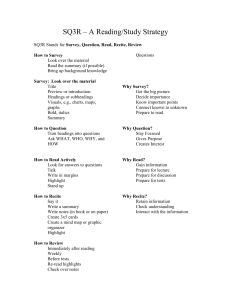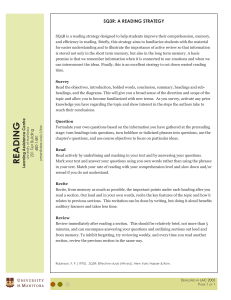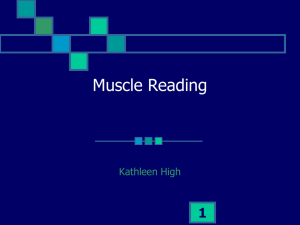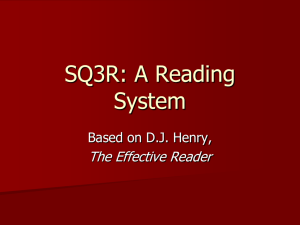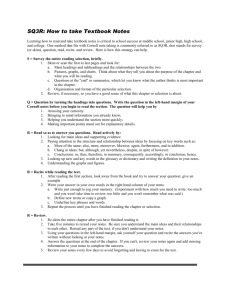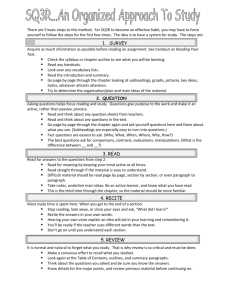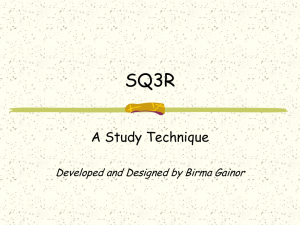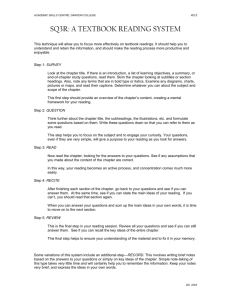SQ3R/Muscle Reading
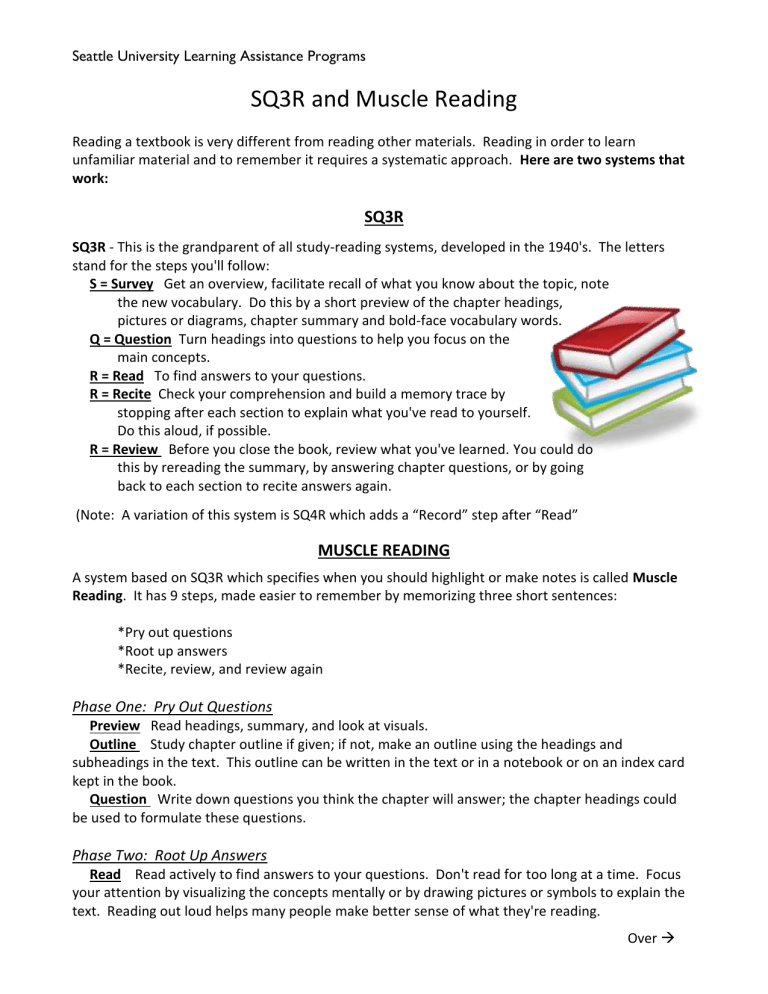
Seattle University Learning Assistance Programs
SQ3R and Muscle Reading
Reading a textbook is very different from reading other materials. Reading in order to learn unfamiliar material and to remember it requires a systematic approach. Here are two systems that work:
SQ3R
SQ3R - This is the grandparent of all study-reading systems, developed in the 1940's. The letters stand for the steps you'll follow:
S = Survey Get an overview, facilitate recall of what you know about the topic, note the new vocabulary. Do this by a short preview of the chapter headings, pictures or diagrams, chapter summary and bold-face vocabulary words.
Q = Question Turn headings into questions to help you focus on the
main concepts.
R = Read To find answers to your questions.
R = Recite Check your comprehension and build a memory trace by
stopping after each section to explain what you've read to yourself.
Do this aloud, if possible.
R = Review Before you close the book, review what you've learned. You could do this by rereading the summary, by answering chapter questions, or by going back to each section to recite answers again.
(Note: A variation of this system is SQ4R which adds a “Record” step after “Read”
MUSCLE READING
A system based on SQ3R which specifies when you should highlight or make notes is called Muscle
Reading. It has 9 steps, made easier to remember by memorizing three short sentences:
*Pry out questions
*Root up answers
*Recite, review, and review again
Phase One: Pry Out Questions
Preview Read headings, summary, and look at visuals.
Outline Study chapter outline if given; if not, make an outline using the headings and subheadings in the text. This outline can be written in the text or in a notebook or on an index card kept in the book.
Question Write down questions you think the chapter will answer; the chapter headings could be used to formulate these questions.
Phase Two: Root Up Answers
Read Read actively to find answers to your questions. Don't read for too long at a time. Focus your attention by visualizing the concepts mentally or by drawing pictures or symbols to explain the text. Reading out loud helps many people make better sense of what they're reading.
Over
Underline After you finish a section, go back and add notes in the margin or highlight major points.
Answer As you read, get answers to your questions and write them down.
Phase Three: Recite, Review, and Review Again
Recite Talk to yourself about what you have read. Being able to put new information into your own words is essential to comprehension.
Review Do this within 24 hours of reading the material. Use your text markings or your separate text notes.
Review Again Do this weekly or monthly. The more frequently you review, the more you'll remember!
SUGGESTIONS:
Feel free to develop your own system for reading texts. For example, you might find it more helpful to do a survey or preview of your text before going to class, then do your more careful reading, marking, and reciting after class. Adapt your system to fit the class.
Apply what you know about writing - the structure, the types of organization, the meaning of different transition words - to your reading. Being able to recognize topic sentences and patterns such as comparison/contrast will help you to better understand what you read.
Break your reading assignments up into manageable sections, and complete all the steps of your study-reading system for one section at a time. You'll remember more!
“Muscle Reading” is from Becoming a Master Student by David Ellis rev 0804
206.398.4450 www.seattleu.edu/SAS/LearningAssistance
